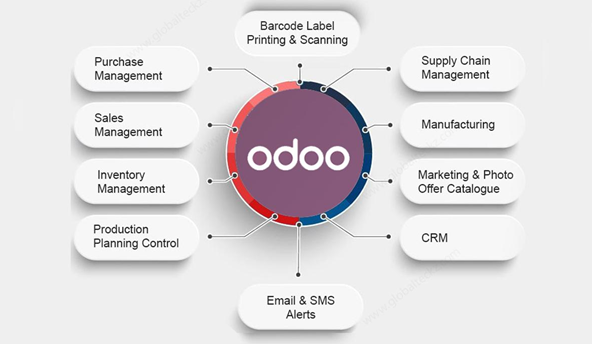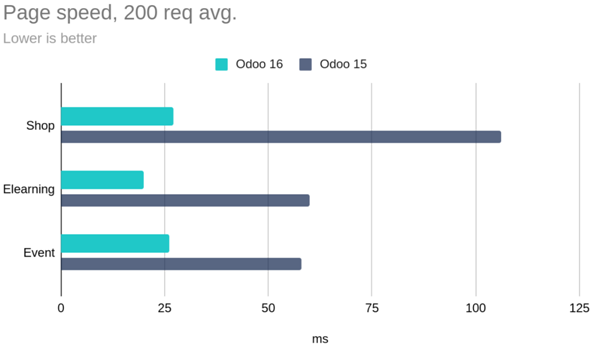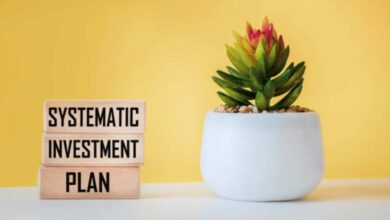When it comes to managing business operations Odoo 16 presents itself as a choice for organizations seeking efficiency. With its user interface and versatile features Odoo 16 simplifies complex processes, making it an invaluable asset for businesses globally. An essential aspect of this platform revolves around the setup of the Bill of Materials (BoM). Odoo currently holds a market share of 9.75% in the enterprise resource planning (ERP) domain. In this blog post we will delve into the steps involved in configuring the Bill of Materials within Odoo 16. Provide guidance on optimizing your production procedures.
Step-by-Step Guide to Configuring Bill of Materials in Odoo 16
In 2023 a substantial number of companies 8,485, as per data gathered by 6sense and publicly accessible information have started adopting Odoo as their Enterprise Resource Planning (ERP) solution. Below is a step-by-step guide on configuring the Bill of Materials (BoM) in Odoo 16. This process holds importance for manufacturing and assembly businesses associated with odoo partners.
Step 1: Log in to Your Odoo 16 Account
First you’ll need to open your web browser and type in the URL for your Odoo 16 instance. Once that’s done simply enter your login credentials ( password) to securely access your account.
Step 2: Access the Manufacturing Module
After logging in you will be directed to the Odoo dashboard. This dashboard serves as the hub for your system. To access the Manufacturing module simply click on the icon labeled “Manufacturing” or navigate through the menu options. This module acts as a hub where you can generate and manage your Bill of Materials (BOMs).
Step 3: Creating a New Bill of Materials
In the Manufacturing module you can locate the option labeled “Bill of Materials.” To initiate the process of creating a BoM all you need to do is click on the “Create” button. Proceed by configuring your desired Bill of Materials according to your specifications.
Step 4: Providing BoM Details
To generate a Bill of Materials (BoM) using the BoM creation form certain specific details must be provided:
- Product: Choose the product for which you are creating the BoM from the menu.
- Product Variant: If applicable, select the variation or subtype of the product.
- Bill of Materials Lines: This section allows you to include all materials, components and sub-assemblies associated with producing the product. Specify each item’s required quantity accurately.
- Routing: Define and outline each step involved in manufacturing and assembling the product by specifying work centers and production processes.
Step 5: Saving Your Bill of Materials
Once all details have been entered into your Bill of Materials it is crucial to save your progress. Simply click on the labeled “Save” button ensuring that your created Bill of Materials is securely stored within Odoo 16s system.
Step 6: Handling Multiple Bills of Materials (Optional)
In Odoo 16 you have the capability to easily create instruction sets for a product that accommodate variations in components or production methods. To effectively manage these instruction sets for the product simply follow steps 3 through 5 for each variation. This will streamline your production process. Give you flexibility.
Step 7:Establishing Priorities (Optional)
Boost your productivity with Odoo 16 by prioritizing the Bill of Materials (BoMs). Specify the manufacturing order to optimize resource allocation when simultaneously working on products. This feature gives you control over your production processes ensuring operations and resource utilization.
Step 8: Version Control (Optional)
The version control functionality allows for the creation and management of iterations of a Bill of Materials (BoM). It ensures that BoMs stay up to date based on evolving business requirements enabling refinement of product specifications and optimization of production procedures. With its flexibility and adaptability Odoo 16 proves to be a tool for managing production.
Step 9: Product Cost Calculation (Optional)
This remarkable platform intelligently calculates the cost of your product by taking into account all expenses associated with its components.
By having this valuable information readily available through the Bill of Materials (BoM) configuration you’ll have the tools to make informed decisions and enhance your production processes effectively.
Step 10: Validate and Use the BoM
Before implementing your planned Bill of Materials (BOM) for production it’s essential to perform validation. This crucial step ensures the accuracy of all details and certifies that your BoMsre ready to be utilized in production. Once a BoM successfully completes the validation process it becomes a guide for organizing manufacturing operations. With the help of Odoo 16s Manufacturing module you can easily access, monitor and manage your BoM ensuring error free production processes.
Examples:
- TechGadgets Inc. Leverages Odoo 16s capabilities and collaborates with odoo partners to develop Bills of Materials (BOMs) for their range of electronic products such as laptops and headphones.
- GreenHarvest Farms, a company specializing in manufacturing cutting-edge equipment utilizes Odoo 16 to establish the list of components required for types of farming machinery.
- Fashionista Couture is a luxury clothing brand that relies on Odoo 16 to create the Bill of Materials for their fashion collections.
Conclusion
Odoo 16 serves as a platform that aims to enhance manufacturing processes. It is highly recommended to engage with odoo partners who offer guidance and tailored ERP solutions. Their expertise and extensive experience will facilitate a transition to Odoo empowering businesses of all scales to unleash their potential. By leveraging the support of Odoo 16 and its dedicated partners one can anticipate productivity and ample growth opportunities. According to updates from Odoo News accessing invoices in Odoo 16 has shown an increase in speed being reported as 3.7 times faster compared to its predecessor Odoo 15.









